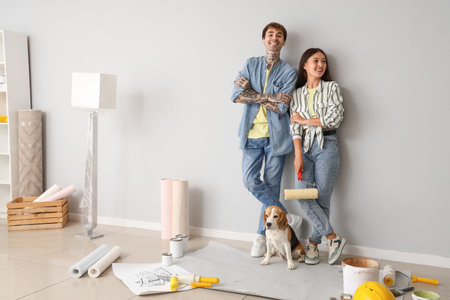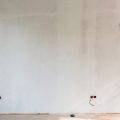Introduction to Wall Texture Techniques
When it comes to interior design in American homes, wall textures play a much bigger role than most people realize. They’re not just about style—they serve both functional and aesthetic purposes. From adding depth and dimension to concealing imperfections, textured walls have become a popular choice among homeowners and contractors alike. Whether youre remodeling or building from scratch, understanding different wall texture techniques can help you choose the best look for your space.
Why Use Wall Textures?
Wall textures do more than just make your walls look interesting. They offer several practical benefits that are especially valuable in residential settings:
| Benefit | Description |
|---|---|
| Adds Depth and Dimension | Textured walls break up flat surfaces, giving rooms a richer, more layered look. |
| Masks Imperfections | If your drywall has dents, cracks, or uneven patches, texture can effectively hide those flaws without needing full repairs. |
| Enhances Aesthetic Appeal | Certain textures like knockdown or orange peel can complement different interior styles—from rustic farmhouse to modern chic. |
| Adds Character | No two textured walls are exactly alike. This uniqueness adds personality to your home’s interior spaces. |
A Common Feature in American Homes
You’ll often find wall textures used throughout American homes, especially in living rooms, hallways, and ceilings. It’s not just a stylistic trend—it’s also part of building tradition. Many American contractors prefer applying textures because its faster and more forgiving than achieving perfectly smooth drywall finishes.
The Look and Feel of Texture
The tactile quality of a textured wall adds warmth and comfort. Unlike flat painted walls that can sometimes feel sterile or cold, textures create an inviting atmosphere thats perfect for family homes, cozy apartments, or even stylish urban lofts.
A Foundation for What’s Next
This introduction sets the stage for diving deeper into specific techniques like Knockdown and Orange Peel—two of the most popular wall textures found in American interiors today. Each has its own look, feel, and method of application, which we’ll explore in detail in the following sections.
2. Understanding Knockdown Texture
Knockdown texture is one of the most popular wall finishes in American homes today. It adds visual interest and a subtle depth to walls and ceilings, making it a favorite choice for both modern and traditional interior designs. This technique sits somewhere between smooth drywall and heavily textured finishes like popcorn ceilings, offering a balanced, stylish look that hides imperfections while remaining easy on the eyes.
What Is Knockdown Texture?
Knockdown texture involves spraying a watered-down joint compound onto the wall and then lightly flattening the peaks with a drywall knife or knockdown blade after it sets slightly. The result is a mottled, stucco-like surface thats softer and more subtle than other textures like orange peel or popcorn.
Why Homeowners Love It
Aside from its aesthetic appeal, knockdown texture offers several practical benefits:
- Conceals imperfections: Great for hiding minor dings and drywall inconsistencies.
- Low maintenance: Less prone to showing dust and fingerprints compared to flat walls.
- Versatile style: Works well in various home styles, from rustic farmhouse to sleek contemporary.
Tools You’ll Need
If youre planning to apply knockdown texture yourself, heres a breakdown of essential tools youll need:
| Tool | Description |
|---|---|
| Texture Sprayer or Hopper Gun | Used to spray the thinned joint compound evenly across the surface. |
| Knockdown Knife or Blade | A wide, flexible tool (usually 18–24 inches) used to flatten the peaks of the sprayed texture. |
| Joint Compound (Thinned) | The material applied to create the texture; typically mixed with water for spraying. |
| Protective Plastic Sheeting & Tape | Keeps floors and surrounding areas clean during application. |
How Its Applied
Step-by-Step Process:
- Prep the area: Cover floors and furniture, mask off trim and outlets.
- Mix your compound: Thin joint compound with water until it reaches pancake batter consistency.
- Spray it on: Use a hopper gun to spray an even coat over your wall or ceiling.
- Wait briefly: Let the compound set for about 10–15 minutes—just enough so its tacky but not wet.
- “Knock down” the peaks: Use your knockdown knife to gently flatten the raised texture without smearing.
Pro Tip:
The timing of when you knock down is crucial. If you do it too soon, it smears; too late, and its hard to flatten properly. Practice on a test board before tackling an entire room.
A Finish That Stands the Test of Time
The knockdown texture continues to be a go-to finish because it balances form and function. Whether youre updating an older home or adding character to new construction, this technique delivers lasting style with practical benefits homeowners appreciate every day.
![]()
3. The Appeal of Orange Peel Texture
Orange peel texture is a popular wall finish in many American homes, especially in modern and suburban interiors. Named for its resemblance to the skin of an orange, this texture offers a subtle and clean look that blends well with a variety of décor styles.
What Is Orange Peel Texture?
Orange peel texture is created by spraying a thin layer of drywall compound onto walls using a hopper gun. Once sprayed, it’s left to dry without being knocked down or smoothed out, giving it a fine, dimpled appearance. It’s smoother than knockdown texture but still provides visual interest and helps mask minor imperfections in the wall surface.
Comparison with Other Wall Textures
Heres how orange peel texture stacks up against other common wall textures:
| Texture Type | Appearance | Ease of Application | Best For |
|---|---|---|---|
| Orange Peel | Smooth with light dimples | Moderate (requires spray equipment) | Modern homes, ceilings, hallways |
| Knockdown | Flat peaks with random patterns | Moderate to difficult (spray then trowel) | Living rooms, textured design spaces |
| Popcorn | Bumpy and heavy texture | Difficult (messy removal) | Older homes, soundproofing ceilings |
| Smooth Finish | No texture at all | Difficult (requires perfect prep) | High-end interiors, accent walls |
Where Orange Peel Works Best in Your Home
This type of wall texture is extremely versatile. It works well in both new constructions and remodeling projects. Common areas where orange peel is often used include:
- Hallways: Its durability helps handle high-traffic scuffing.
- Kitchens: Easy to clean while adding subtle character.
- Bedrooms: Offers a soft look without being distracting.
- Ceilings: Helps hide minor ceiling flaws while keeping the space light and airy.
Pro Tip:
If you’re going for a modern or transitional interior style, orange peel texture can add just enough depth to your walls without overpowering your design choices.
4. Other Common Wall Textures in the U.S.
While knockdown and orange peel textures are among the most popular wall finishes in American homes, there are several other texture styles worth knowing. These additional techniques can give your walls a unique look and feel, depending on the style of your home or personal taste. Let’s take a closer look at three other common wall textures: skip trowel, slap brush, and sand swirl.
Skip Trowel
The skip trowel technique creates a slightly uneven, hand-applied finish that adds depth and character to walls. It’s commonly used in Mediterranean- or Spanish-style homes. This texture is achieved by applying a thin layer of joint compound with a curved trowel and then “skipping” it across the surface to leave behind raised patches. The result is a more artisanal and custom appearance compared to machine-applied textures.
Slap Brush
Also known as “stomp brush,” this technique uses a thick-bristled brush that’s slapped onto a layer of wet drywall mud to create a random pattern. Its often found in older homes or those aiming for a rustic or traditional vibe. The slap brush texture adds movement and interest to walls without being too overwhelming, making it suitable for bedrooms, hallways, or dens.
Sand Swirl
This method blends artistic flair with subtle texture. A mixture of joint compound and fine sand is applied using a brush or sponge in circular motions to create overlapping swirl patterns. Sand swirl textures are typically found in mid-century or retro-style homes and are great for ceilings or accent walls where you want a soft yet noticeable design.
Comparison Table of Additional Wall Textures
| Texture Style | Application Method | Commonly Found In | Best Use Areas |
|---|---|---|---|
| Skip Trowel | Trowel-skip over drywall mud | Mediterranean/Spanish-style homes | Living rooms, dining areas |
| Slap Brush | Brush slapped over wet mud | Traditional/rustic interiors | Bedrooms, hallways, basements |
| Sand Swirl | Circular motion with sanded mud | Mid-century/retro homes | Ceilings, accent walls |
Each of these wall textures brings its own personality to a space. Whether youre going for an elegant European feel or something more casual and cozy, understanding these options can help you make the right choice for your next project.
5. DIY vs. Hiring a Pro: What to Consider
When it comes to wall texture techniques like knockdown, orange peel, or slap brush, one of the biggest decisions homeowners face is whether to take the DIY route or hire a professional. Each option has its own set of benefits and challenges. Let’s break down what you should consider before picking up a trowel or dialing a contractor.
Cost Comparison
One of the first factors most people look at is cost. Doing it yourself can save money upfront, but you’ll need to invest in tools and materials. On the other hand, hiring a pro might seem more expensive, but the price usually includes everything—from prep work to cleanup.
| Factor | DIY | Hiring a Pro |
|---|---|---|
| Initial Cost | Lower (tools and materials only) | Higher (labor, tools, materials included) |
| Tools Needed | Sprayer or hopper gun, trowels, drywall knives, drop cloths | Provided by contractor |
| Total Time Investment | High – includes learning curve and labor time | Low – professionals work efficiently |
| Potential for Mistakes | High – especially for beginners | Low – experience reduces errors |
| Quality of Finish | Varies – depends on skill level and patience | Consistent and professional-looking |
Skill Level Required
If youve never worked with drywall compound or texture sprayers before, wall texturing can be challenging. Techniques like knockdown require precise timing—you have to wait just long enough for the sprayed mud to set before knocking it down with a blade. Orange peel textures demand even spray patterns and pressure control.
If youre comfortable with home improvement projects and willing to practice on scrap drywall first, you might enjoy learning these techniques. But if youre aiming for flawless walls without the trial-and-error phase, hiring a seasoned pro might be worth it.
The Right Tools for the Job
The type of texture you want will determine which tools youll need. For example:
- Knockdown: Texture sprayer or hopper gun, knockdown knife or wide taping knife.
- Orange Peel: Hopper gun with specific nozzle settings for fine spray.
- Slap Brush: Thick-bristled brush and drywall mud mixed to pancake batter consistency.
You can rent many of these tools from home improvement stores if buying isnt practical. But keep in mind that pros already have access to commercial-grade equipment that delivers consistent results.
Your Timeline & Project Scope
If you’re under a tight deadline—like prepping your home for sale or finishing up renovations before guests arrive—outsourcing the job could save you stress. A professional team can usually complete a room in a day or two depending on size and complexity. DIYers may take several days or even weekends to get similar results.
A Quick Self-Check Before You Decide:
- Are you patient enough to learn and practice?
- Do you have access to—or are willing to rent—the right tools?
- Is your project timeline flexible?
- Are you okay with possible imperfections in exchange for saving money?
- If mistakes happen, do you know how to fix them?
No matter which route you choose, understanding the demands of wall texturing will help ensure your walls turn out looking their best—whether its your handiwork or a pros.


